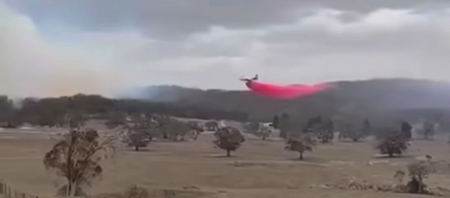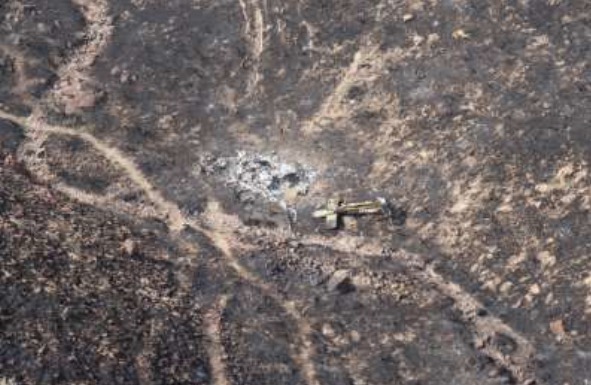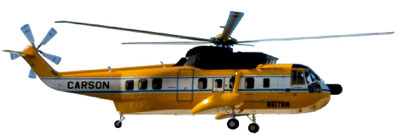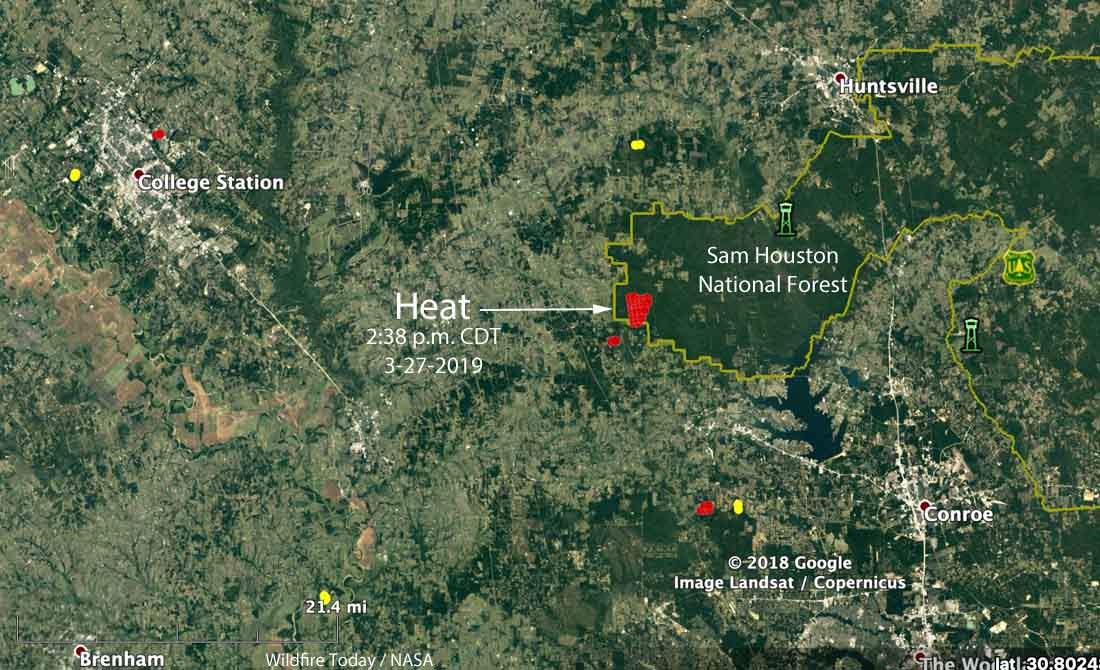
After seeing the wildland firefighter accident and injury stats for 2019 I checked to see if the National Transportation Safety Board had any additional information about the helicopter crash on a prescribed fire in Texas March 27, 2019 that resulted in one fatality and two people with injuries. Here is an excerpt from their preliminary report:
On March 27, 2019, about 1435 central daylight time, an Airbus AS350B3 helicopter, N818MC, was substantially damaged when it collided with trees and terrain following a loss of engine power near Montgomery, Texas. The commercial rated pilot was seriously injured, one Forest Service crew member was fatally injured, and another crew member sustained minor injuries. The helicopter was owned by Mountain Air Helicopters, Inc and operated by the United States Forest Service (USFS) as a public use helicopter. Visual meteorological conditions prevailed for the flight which operated without a flight plan.
The helicopter and crew were conducting plastic sphere dispenser (PSD) applications in support of controlled fire operations in an area of the Sam Houston National Forest. Initial information provided by the pilot and surviving crew member report that after completing the application, the helicopter began flying back to the helicopter’s staging area when the engine lost complete power. The helicopter descended into trees and subsequently impacted terrain, coming to rest on its right side. One crew member and the pilot were able to exit the helicopter, however one of the crew members was partially ejected from the helicopter and sustained fatal injuries.
One of the firefighters was deceased on scene. The pilot and a second firefighter were transported to a hospital after rescuers extricated them from the wreckage using jaws and air bags.
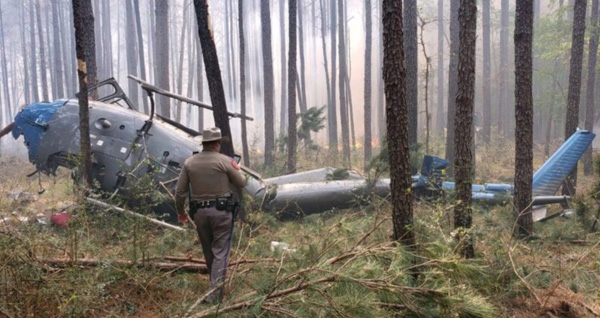
It could be another six months or so before the final report is released.
The prescribed fire was in the Sam Houston National Forest about 30 miles southeast of College Station, Texas south of Highway 149.
In 2015 two were killed in Mississippi under similar circumstances on a prescribed fire when engine failure brought down a helicopter conducting aerial ignition operations. A third person suffered serious injuries.
Flying low and slow in a single-engine helicopter while igniting fire below the aircraft is obviously very, very dangerous. These three fatalities offer very compelling justification for using drones for aerial ignition instead of manned aircraft.

Below is an excerpt from the final NTSB report for the 2015 crash in Mississippi (Accident #ERA15FA173:
Analysis
The purpose of the flight was to assist in the scheduled burn of an 800-acre wooded area. The helicopter was under contract with the US Department of Agriculture Forest Service. A Forest Service employee reported that, as the helicopter neared the conclusion of a 61-minute controlled burn mission, he observed it complete a turn to a northerly heading at the southwestern end of the burn area. About 7 seconds later, he heard a sound that resembled an air hose being unplugged from a pressurized air tank. A crewmember, who was the sole survivor, reported that the helicopter was about 20 ft above the tree canopy when the pilot announced that the helicopter had lost power. The helicopter then descended into a group of 80-ft-tall trees in a nose-high attitude and impacted terrain. Witnesses participating in the controlled burn at the time of the accident did not observe any other anomalies with the helicopter before the accident.
The fuel system, fuel pump, and fuel control unit were destroyed by fire, which precluded a complete examination. During the engine examination, light rotational scoring was found in the turbine assembly, consistent with light rotation at impact; however, neither the turbine rotation speed nor the amount of engine power at the time of the accident could be determined. The rotor blade damage and drive shaft rotation signatures indicated that the rotor blades were not under power at the time of the accident. An examination of the helicopter’s air tubes revealed that they were impact-damaged; however, they appeared to be secure and properly seated at their fore and aft ends.
On the morning of the accident flight, the helicopter departed on a reconnaissance flight with 600 lbs of JP-5 fuel. The helicopter returned with sufficient fuel for about 133 minutes of flight, and the helicopter was subsequently serviced with an unknown quantity of uncontaminated fuel for the subsequent 60-minute accident flight. Based on the density altitude, temperature, and airplane total weight at the time of the accident, the helicopter was operating within the airplane flight manual’s performance limitations.
Most of the cockpit control assemblies were consumed by fire except for the throttle, which was found in the “idle” position. Given the crewmember’s report that, after the engine failure, the helicopter entered and maintained a nose-high attitude until it impacted trees and then the ground, it is likely that the pilot initiated an autorotation in accordance with the Pilot’s Operating Handbook engine failure and autorotation procedures. A review of the pilot’s records revealed that he passed the autorotation emergency procedure portion of his most recent Federal Aviation Administration Part 135 examination, which occurred 1 month before the accident, and this may have aided in his recognition of the engine failure and decision to initiate an emergency descent.
Although a weather study indicated that smoke and particulates were present in the area before, during, and after the accident, witnesses reported an absence of smoke near the area where the helicopter lost power and impacted the ground.
Probable Cause and Findings
The National Transportation Safety Board determines the probable cause(s) of this accident to be:
A loss of engine power for reasons that could not be determined due to postaccident fire damage.

